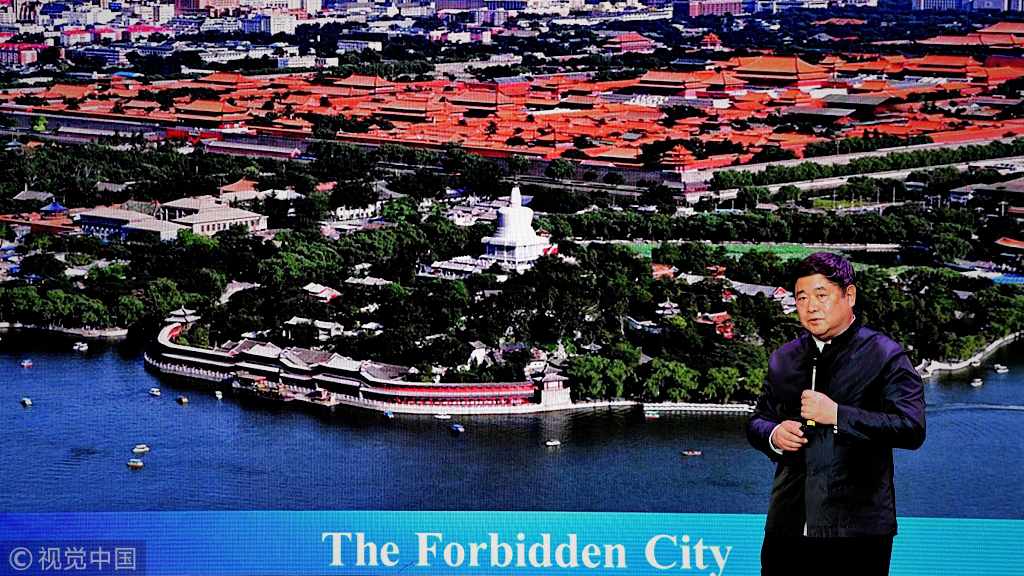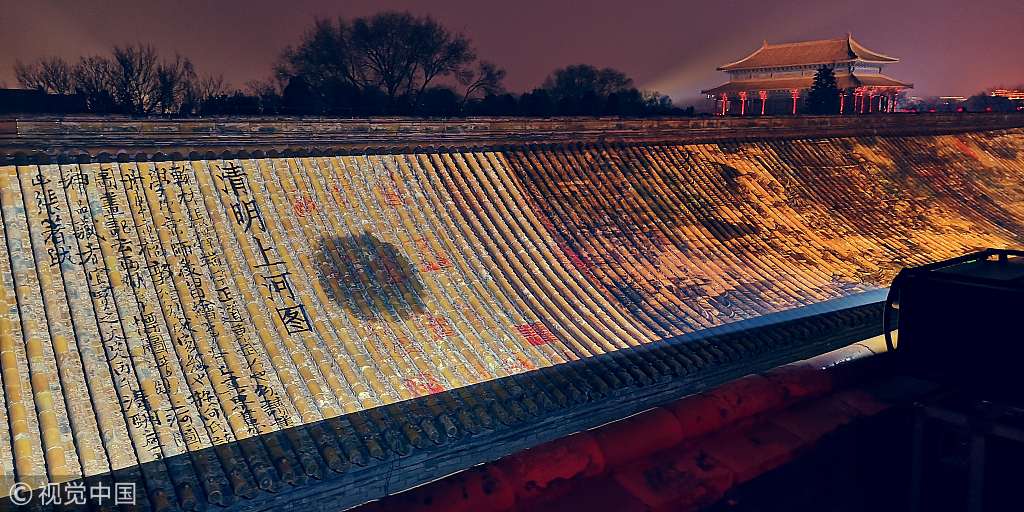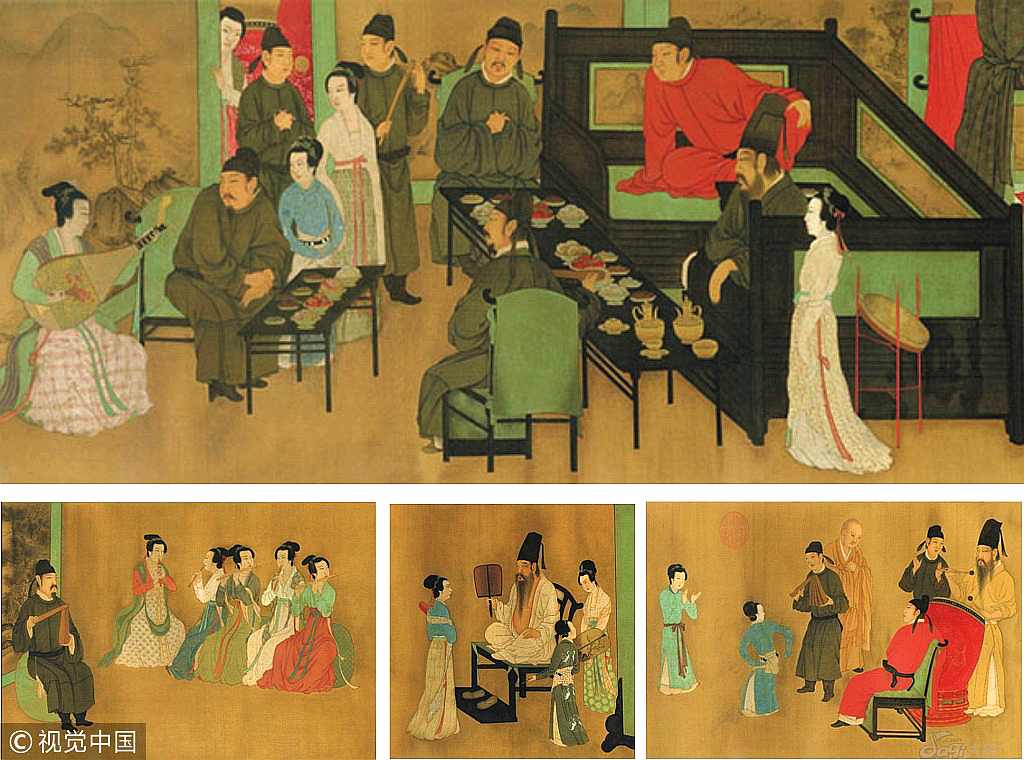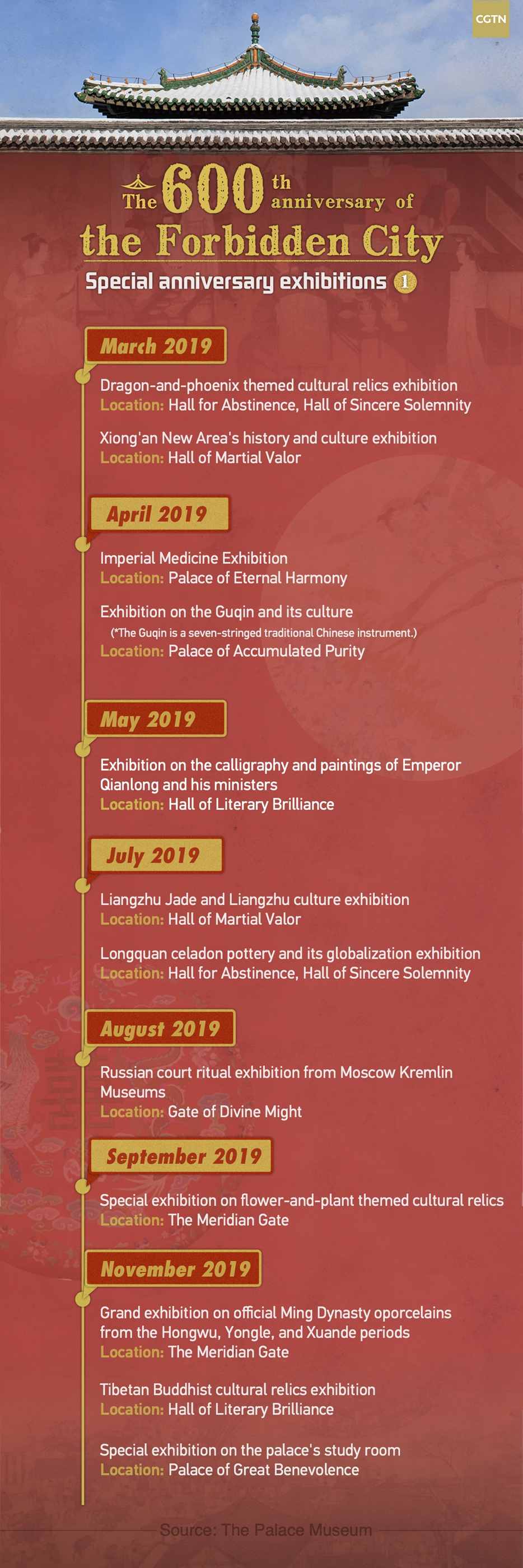China's Palace Museum will hold a series of grand exhibitions to celebrate the 600th anniversary of the Forbidden City – one of the world's most visited tourist attractions.
As imperial palace of two consecutive dynasties – the Ming Dynasty (1368-1644) and the Qing Dynasty (1644-1911), the Forbidden City in central Beijing currently is home to the Palace Museum, which was established in 1925.
A cluster of former emperors' offices and residence of royal families, also known as "Gu Gong" in Chinese, now houses more than 1.8 million cultural treasures. It received more than 17 million visitors last year.

Aerial view of the Forbidden City in Beijing, China. (Photos: VCG)
"We would like to celebrate its birthday in a special way," said Shan Jixiang, curator of the Palace Museum, at a press in Beijing this week. He also unveiled the over-one-year celebration plan for the series of exhibitions, which will last until the end of 2020.
Shan noted that the museum will present more innovative exhibitions and various events from this month, bringing high-quality and diverse cultural vibes into every corner of the time-honored buildings.

Shan Jixiang, the curator of the Palace Museum, introduces the series of exhibitions in celebration of the 600th anniversary of the Forbidden City at a press in Beijing, China, March 4, 2019.
Through the series of exhibitions, the public will have a taste of the endless charm embodied in the 600-year-old Forbidden City and the 95-year-old Palace Museum.
In the meantime, the museum plans to open more areas to the visitors while several palaces will reopen after years of restoration, presenting the royal paraphernalia in original patterns in ancient time.
The exhibits cover a wide range of categories, including paintings, calligraphy, bronzes, ceramics, jades, ancient books, historical documents, timepieces, as well as other national cultural heritage and the artifacts from foreign countries.

The Forbidden City is decorated with red lanterns and colorful lights during the Chinese Lantern Festival on the last day of the Lunar New Year celebrations in Beijing, China, February 19, 2019.
These events also involve a variety of topics, such as royal-family life and court culture, Chinese festivals and customs, global civilization, and archaeological discoveries.
Modern digital technologies are being used to show numerous pieces of the collections, which allows the visitors to step across the boundaries of art, science, and history, traveling back in time and across the spaces for a cultural adventure.
A rare sight to national treasures and foreign artifacts

Digital and lighting technologies are used to display the renowned scroll painting "Along the River during the Qingming Festival" on the palace roofs during the Lunar New Year celebrations at the Forbidden City in Beijing, China, February 19, 2019.
It is noteworthy that among a vast number of exhibits are some of the most celebrated artistic works and national treasures.
Song Dynasty artist Zhang Zeduan's (1085–1145) masterpiece "Along the River during the Qingming Festival," which is universally considered as one of the best-known Chinese ancient paintings, is set to be on display in September in 2020.
To protect and preserve the delicate artwork, it was only rolled out in front of the public once every few years. The famous painting made its debut in 2005 to celebrate the museum's 80th anniversary, and later in Hong Kong in 2007 to mark the 10th anniversary of its return to China.

Part of Zhang Zeduan's (1085–1145) masterpiece "Along the River during the Qingming Festival"
Another extraordinary art piece "Night Revels of Han Xizai" – also a jewel in the crown of Chinese art history – will shine at another exhibition in May next year.
The scroll was painted by Gu Hongzhong, an imperial court painter during the Southern Tang Dynasty (937-975), who inspired numerous Chinese painters to follow the painting techniques applied to the piece.
Such a rare chance to have a close look at these notable art pieces is expected to draw huge crowds.

Details of Gu Hongzhong's (937-975) renowned scroll painting "Night Revels of Han Xizai"
According to Shan, there will be more than 500 porcelains during the Ming Dynasty, and also more than 500 porcelains during the Qing Dynasty to go on display. "We have never held such a large scale exhibition at the Palace Museum," stressed Shan.
In addition to Chinese relics, cultural heritages from Russia's Moscow Kremlin Museums, including czars' garments, photos, royal files, and daily-use objects, will also shine at the Forbidden City, which marks the first time for these artifacts exhibited outside Russia.
The Palace of Prolonging Happiness, also known as the Yanxi Palace, is transformed into the gallery of foreign cultural relics, displaying more exhibits from the prestigious museums of various countries.

Shan talks about the international cooperation between the Palace Museum and its counterpart from other countries at the press in Beijing, China, March 4, 2019.
As the former residence and office of eight Qing Dynasty emperors, the Hall of Mental Cultivation, or "Yangxin Dian" in Chinese, will finish two-year renovation and reopen to the public in October 2020.
The whole of the maintenance project, which has lasted a total of 18 years, is also scheduled to conclude next year when the Forbidden City celebrates its 600th anniversary.
Timeline of some of the special anniversary exhibitions




